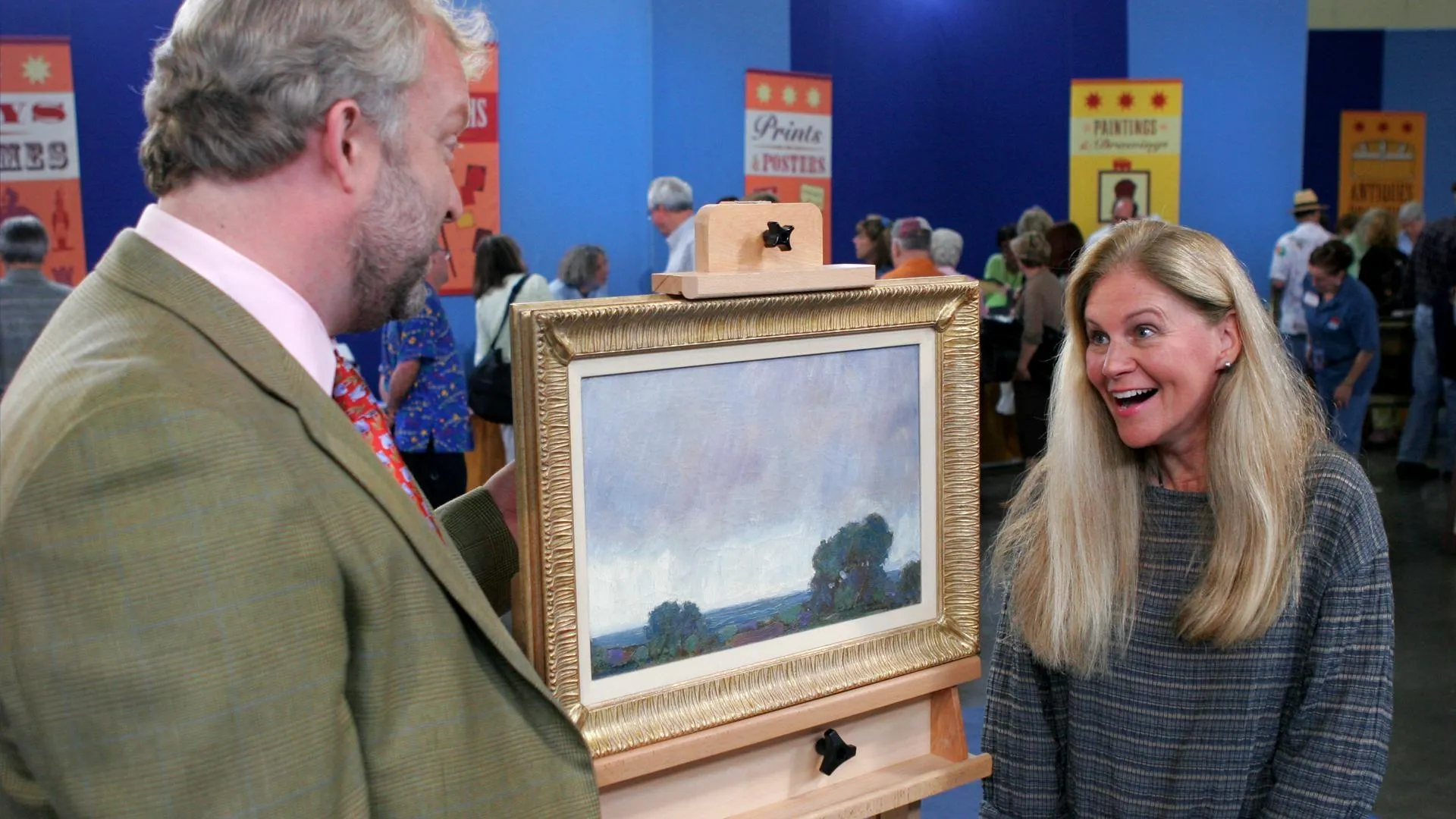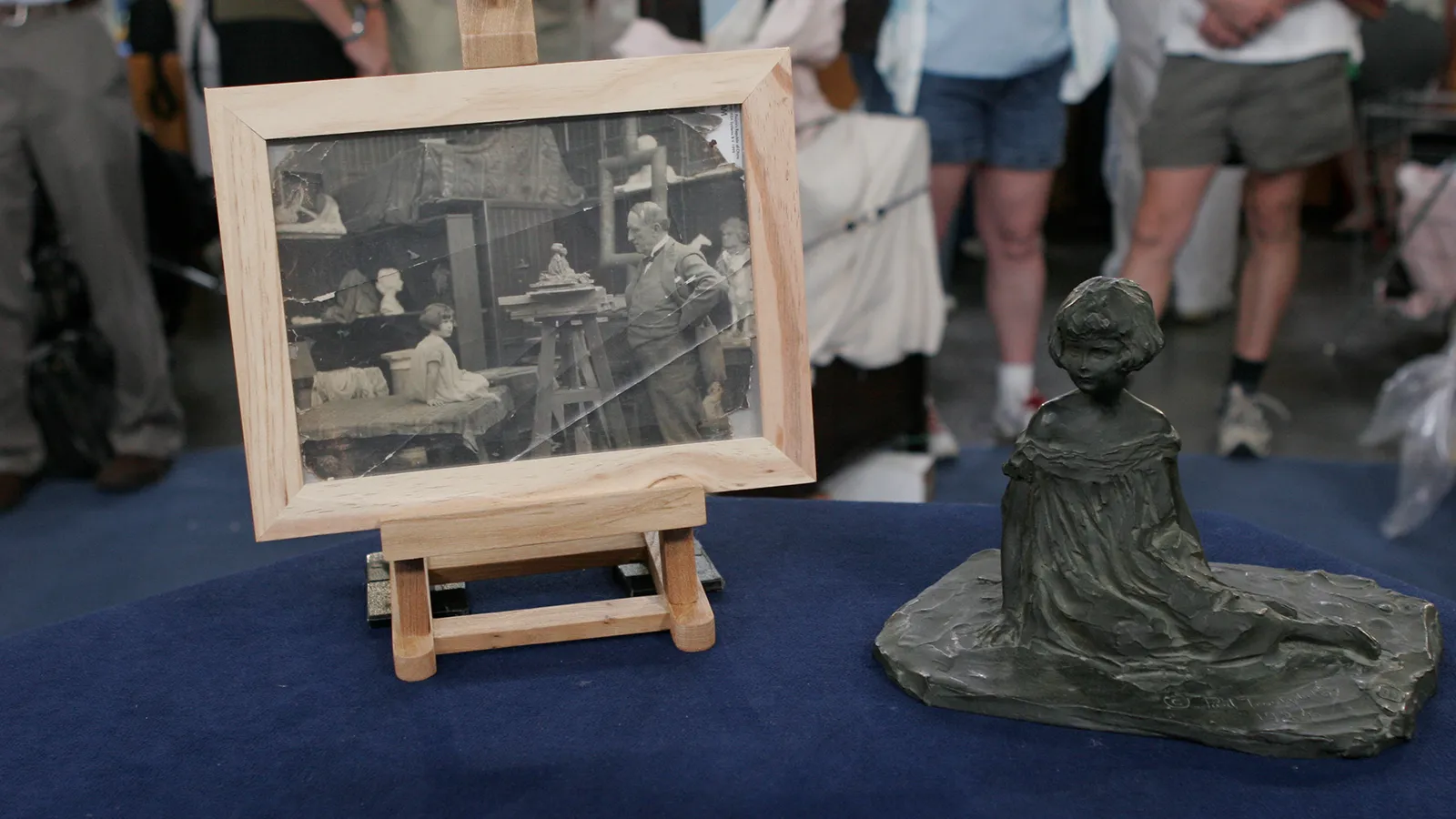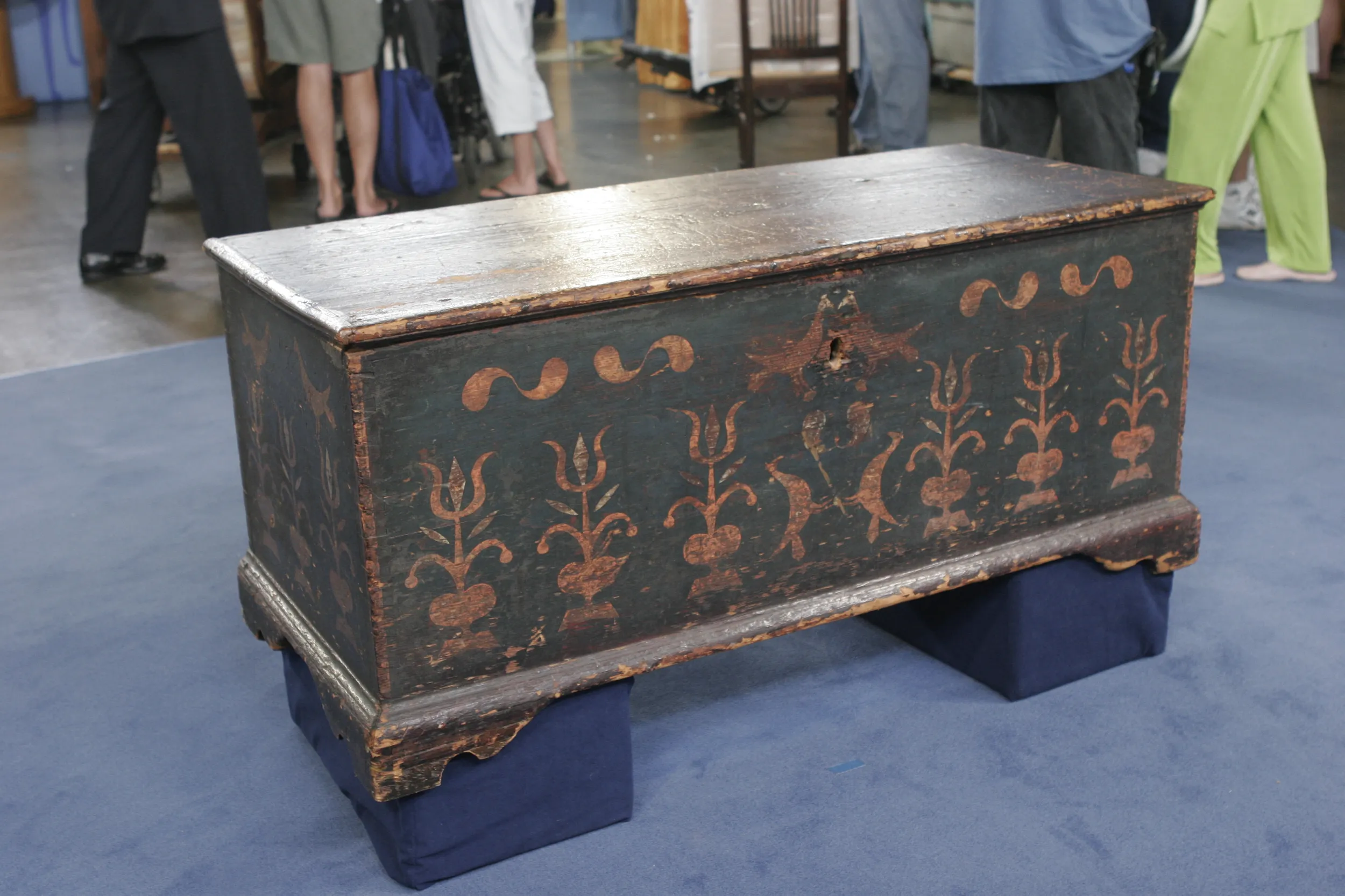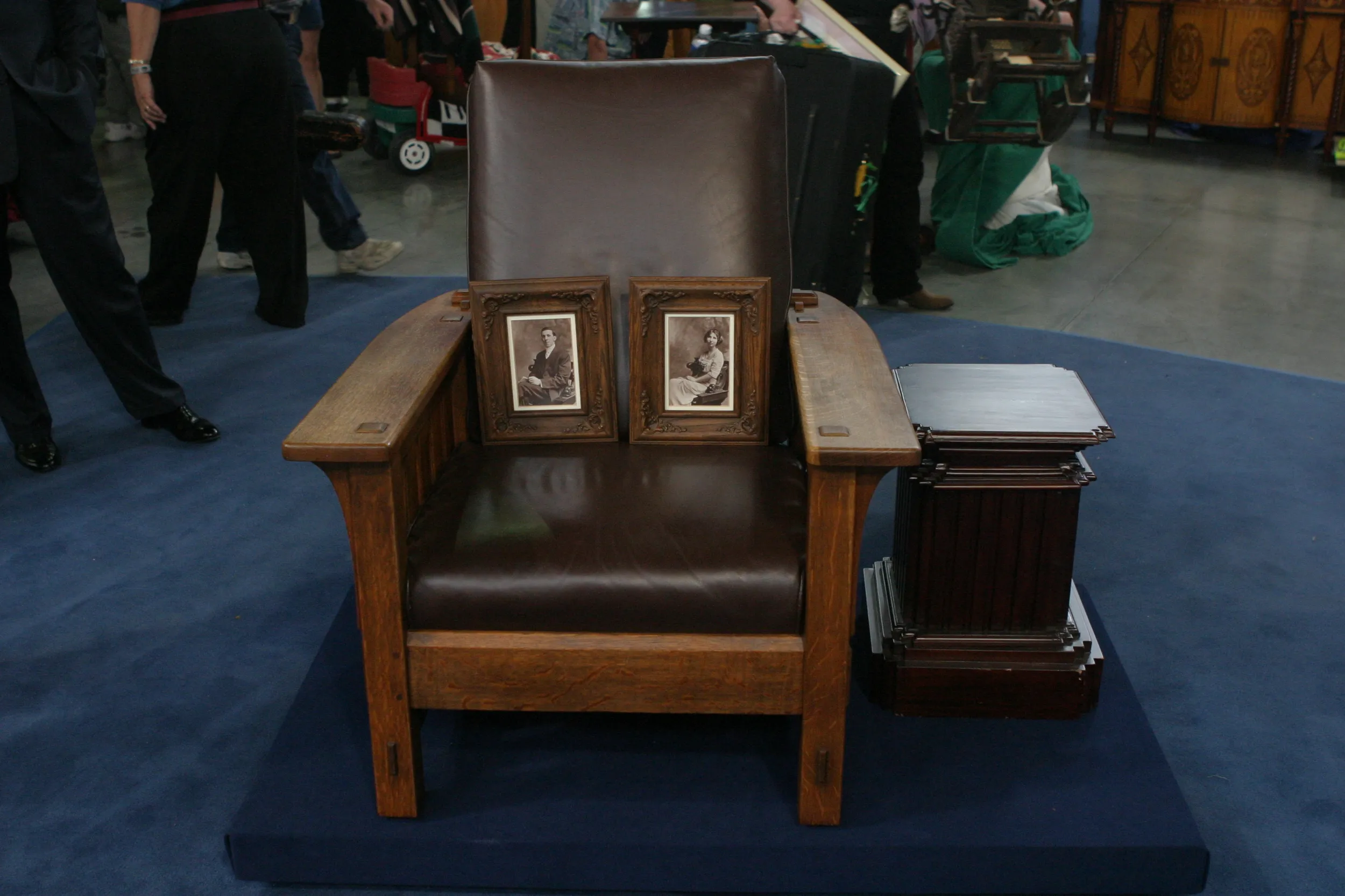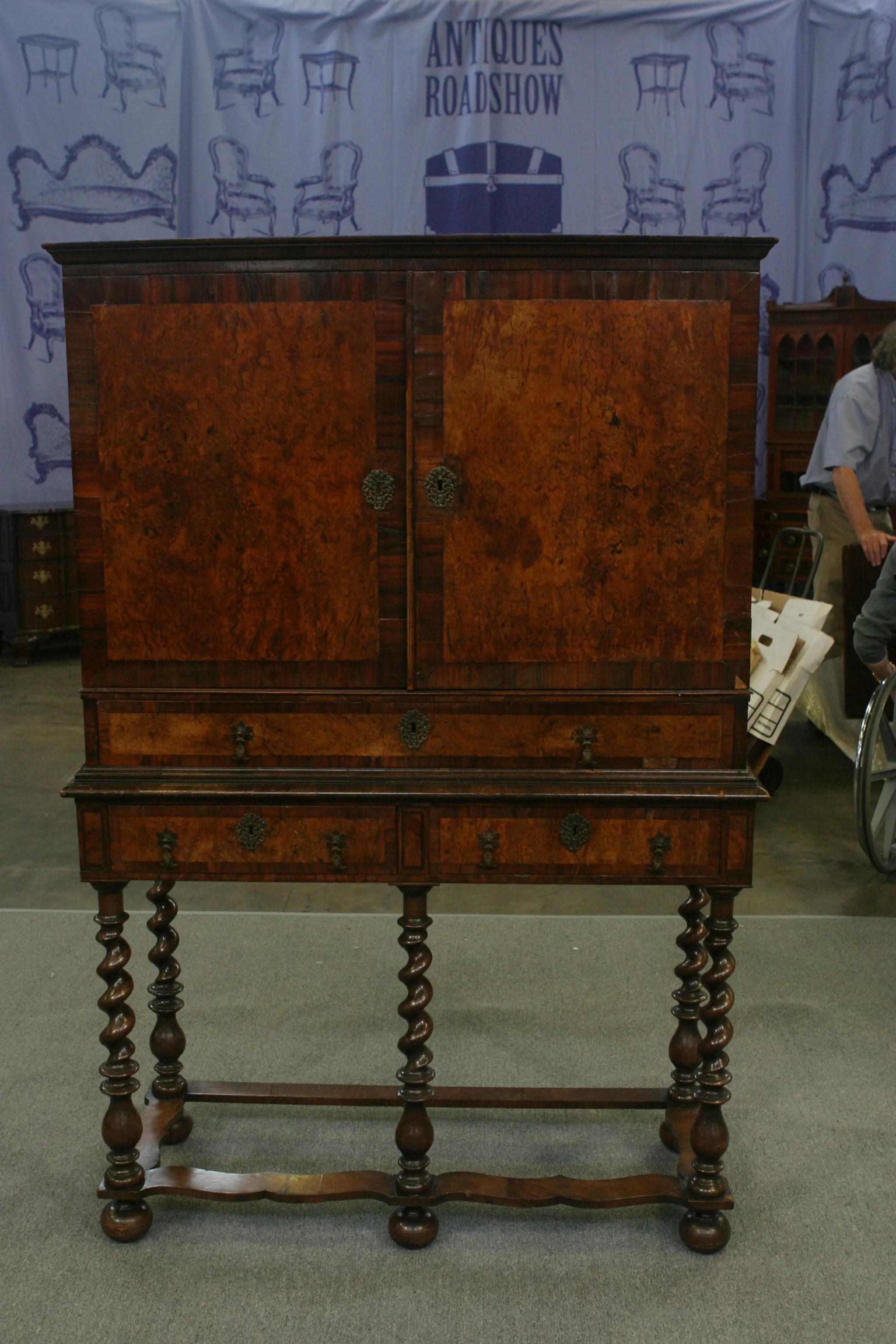GUEST: Well, this clock originally belonged to my great-great-great- grandfather, Judge John Kearsley. He was appointed by Patrick Henry. After that, it was passed down to his son, who passed it down to his son, which was Major George Kearsley, who owned the clock during the Civil War.
APPRAISER: Okay.
GUEST: There's a family story that says that the lead weights were melted down and used for ammunition during the Civil War, and that the clock was hidden away and forgotten about for a few years. It was discovered again in 1880 and given back to Major George Kearsley.
APPRAISER: Really? Where was it discovered?
GUEST: In an attic of a relative's house.
APPRAISER: Really?
GUEST: Because that's where it was hidden. After that, it was handed down to his son, then down to the next grandfather. down to my father, then down to me.
APPRAISER: This is a clock made by Aaron Willard, who came from a family of our country's most famous clockmakers. His brother was the most famous clockmaker, Simon Willard, and Aaron Willard is certainly our country's second-most famous maker, and you see his name right here on the dial, "A. Willard." Aaron Willard was born in 1757 and died in 1844. He had three other brothers, Simon, Ephraim, and Benjamin, that worked with him in Grafton, Massachusetts. He followed his brother Simon from Grafton to Roxbury in 1780. This is a Massachusetts shelf clock made circa 1785, which is a really early Massachusetts shelf clock. There's a couple of features that make this clock very early. It's what we call a case-on-case form. It has this case here, and then these brass feet. And then again, it's repeated with another case, and then these wonderful brass scrolled feet here. It has this beautiful balloon top with a, what they call a kidney dial, and it's a very early form, and it's certainly the earliest form of a Massachusetts shelf clock with a painted dial. It's a mahogany case. It has a nice original finish on it, which a lot of clock collectors really like. The dial is great, there's really no paint loss. It's in fantastic condition. The hands are absolutely wonderful. They're called poker beetle hands, they're an early form. It's just an absolutely incredible clock. Any museum would be glad to have this clock. I mean, it's just... It's as good as they get.
GUEST: Wow.
APPRAISER: The weight was original, the movement's fantastic. It's a beautiful piece. This clock, in a showroom, would certainly sell between $125,000 to $150,000.
GUEST (chuckles): Wow.
APPRAISER: It's a little surprising?
GUEST (laughs): Yes.
APPRAISER: It is just an absolute treasure.
GUEST: Boy.
APPRAISER: Any serious clock collector would love to have this clock.
GUEST: I think we should insure it.
APPRAISER: I would certainly put an insurance value on this clock at about $150,000.
GUEST: Wow.
APPRAISER: I mean, I haven't seen a nicer clock in a long time.
GUEST: Thank you.

